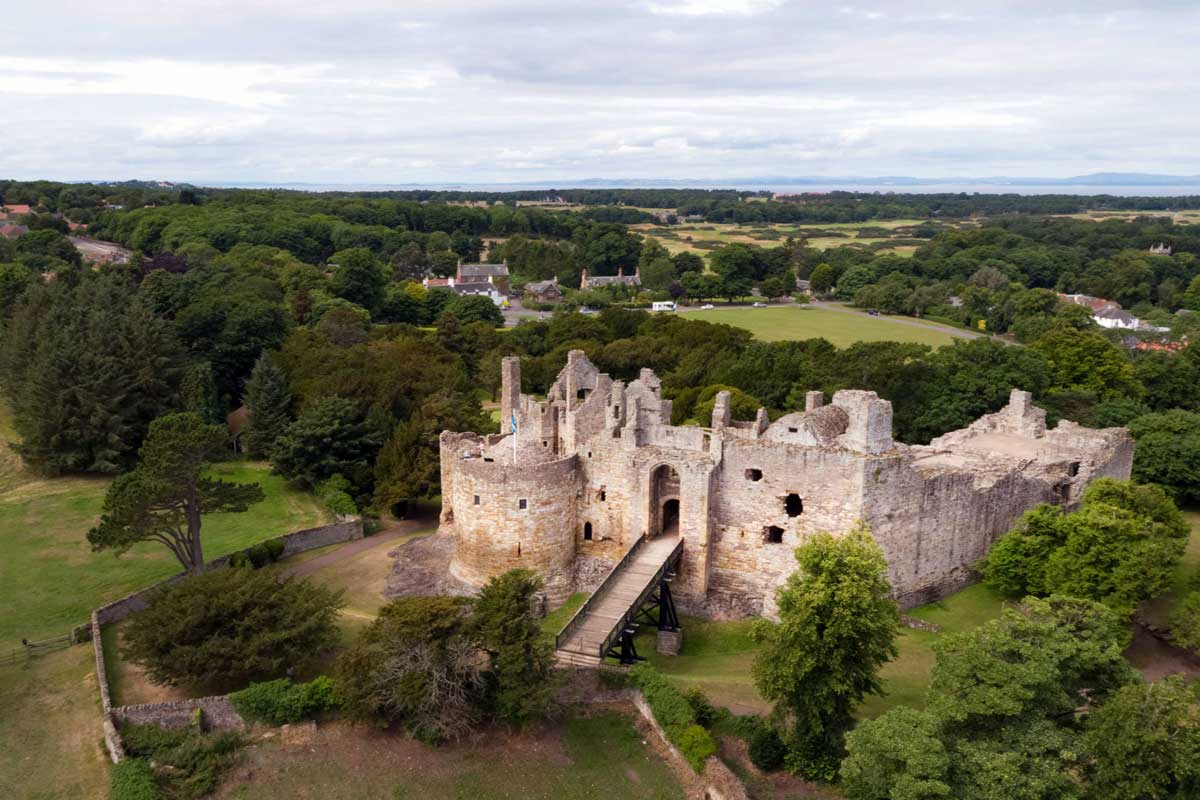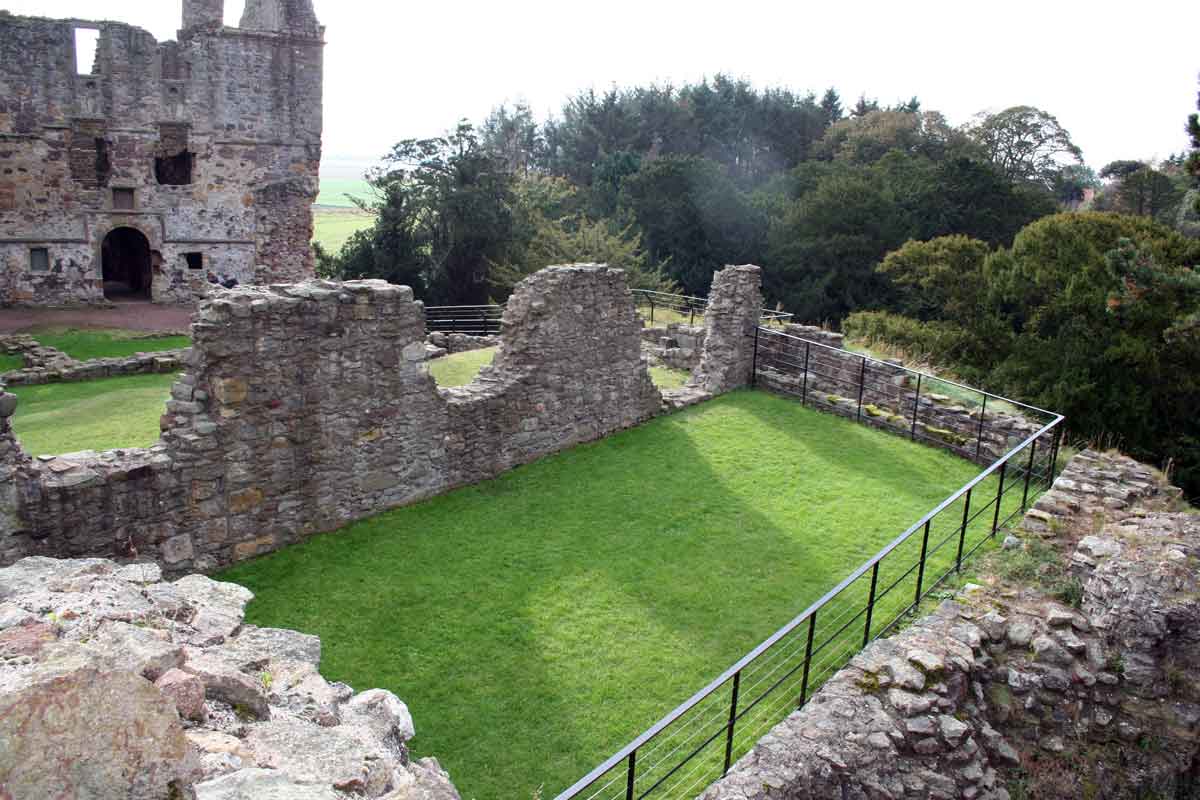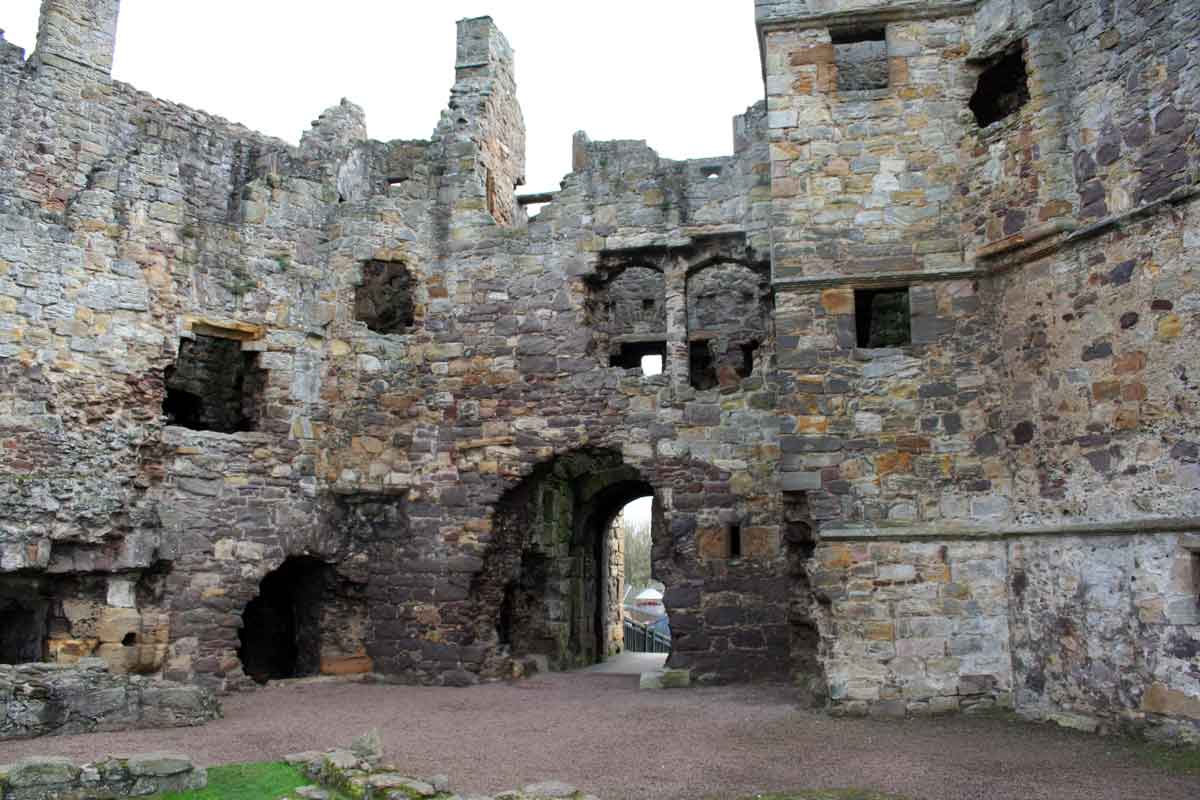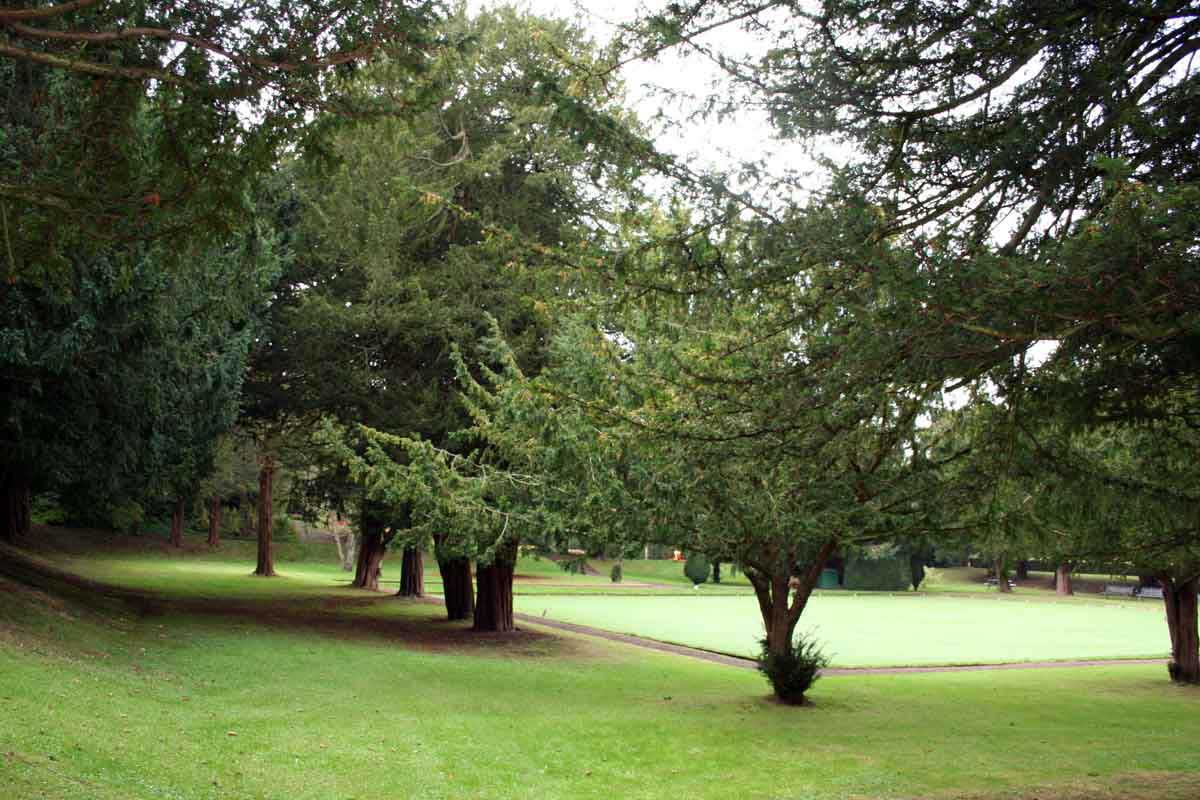
Dirleton Castle is situated in the pretty village of Dirleton, East Lothian approximately 25 miles east of Edinburgh city centre.
Despite its proximity to the capital it’s arguably a less well-known historical site in Scotland. However, it has a fascinating history dating back to the 13th century and is well worth exploring.
It has the added advantage of being only a handful of miles from the impressive bulk of Tantallon Castle and the Bass Rock which makes it a great day trip from Edinburgh
Dirleton Castle: visitor information
Dirleton Castle is managed by Historic Environment Scotland (HES). As opening hours, ticket prices and accessibility information can sometimes change, please visit the official site by clicking the button below for the most up-to date information.
History of Dirleton Castle
Within Dirleton Castle’s immediate area, long-gone Roman, Anglo-Saxon, Iron and Bronze Age residents have left just the briefest indication of what their lives were like. The castle ruins say much more.
Dirleton Castle served as a residence for three noble families.
They were the Anglo-Norman de-Vaux family, the Berwickshire Haliburton family and the Perthshire Ruthvens who eventually surrendered the castle to James VI.
The castle is a fascinating, although occasionally confusing, amalgam of architectural styles and personal tastes. It’s a window into the lives of successive generations.
However, it is for many the story of the people who lived, worked or were associated with the castle and their place in Scotland’s evolution that grabs and holds their attention.
Battle of Hastings 1066
The year 1066 is the date of the Battle of Hastings, one of the most famous battles in English history.
English Heritage said, “The overthrow of the Saxon kingdom of England by William the Conqueror and his Norman knights was to transform the country they had conquered,
“from how it was organised and governed to its language and customs – and perhaps most visibly today, its architecture.”
Following Hastings, there was also a greater Norman presence in Scotland.
the Book of Deer Project said the first record of Normans appearing north of the border was in 1054 in a battle between MacBethad mac Findlaich (Macbeth) and Máel Coluim mac Donnchada (later Malcolm III).
The de Vaux family, originally from Rouen in Normandy and one of many following in the footsteps of William the Conqueror went first to Pentney in Norfolk.
At the invitation of David I, king of Scots (r. 1124-53), two brothers came north.
Hubert, the elder, was given the barony of Gilsland (modern Cumbria), at the time part of Scotland, and the king awarded Dirleton to John (I).
Hubert’s path was clear, building castles at Brampton and Irthington. However, his brother’s journey was less so.
Records hint at the existence of a manor house built at Eldbotle to the north of Dirleton while some charters mention Castle Tarbet on the island of Fidra in the Firth of Forth.
Historic Environment Scotland suggests this castle may have served as the family’s main seat.
Contemporary records say that “…there are no visible remains of buildings though there are suggestions of foundations.”

In 1220, William de Vaux presented Fidra to the monks of Dryburgh Abbey.
HES suggested the “elderly lord of Dirleton was probably hoping that his charity would help secure his safe passage through purgatory to heaven.”
When William died soon after making his gift to Dryburgh he was succeeded by his son John (II).
By this time John de Vaux already had a taste of royal authority having in 1213 been held hostage, along with other Scottish nobles, by England’s King John to ensure the good conduct of William the Lion.
John de Vaux built the first castle at Dirleton
He is credited with building the first stone castle at Dirleton dated by a number of reliable sources to “after 1240.”
There is, however, a castellum de Dyrlton c. 1225 mentioned in the Liber S. Marie de Dryburgh which rather muddies the waters.
W Douglas Simpson, writing in the Scottish Historical Review, concluded that the de Vaux family had a “place of strength there at an earlier date… of the usual timber or clay construction.”
Simpson also argued that Dirleton along with Bothwell and Kildrummy Castles, “may be regarded by reason of their elaborate design and their beautiful architecture
“may be regarded as in some degree, comparing with the finer contemporary castles in England and France.”
In 1239, as his influence grew, John de Vaux was appointed seneschal (steward) to Marie de Coucy, daughter of Enguerrand de Coucy (the Great), Lord of Coucy in Picardy, France and second consort of King Alexander II.
It seems certain that the formidable Coucy la Chateaux, built by Marie’s father inspired the design of Dirleton.
John must have visited on a number of occasions when accompanying his queen on journeys to France to visit her family, so he would have been familiar with the building.
Acknowledging the connection, Simpson said, “Dirleton has a contemporary parallel at Coucy.”
More Scottish Castles
Although Marie and Alexander’s marriage had no direct impact on life at Dirleton, the accidental death of their son, the future Alexander III, in March 1286 triggered a succession crisis.
The Scottish Wars of Independence, which followed, changed both Dirleton Castle and Scotland forever.
Following his defeat by William Wallace and Andrew Moray at the Battle of Stirling Bridge in September 1297, Edward I’s army was back in Scotland the following year heading for the next confrontation with the Scots at Falkirk.
English attack on Dirleton Castle
With Edward camped at Roxburgh in the Scottish Borders waiting for re-supply, he gave orders to Anthony Bek, Bishop of Durham to seize three East Lothian Castles.
One of them was Dirleton and although the names of the other two are not recorded, it’s thought they were Hailes and Yester Castles.
As a religious man, Bek may have seemed a surprising choice to lead the English attack on Dirleton but he already had close royal connections,
In 1265, he was a servant of Henry III and following the death of Alexander III, he became Edward’s spokesman during the succession negotiations.
Edward dispatched Bek and a division of the army to do his bidding but arriving at Dirleton he sent the king the news that he had neither the siege engines nor the rations to complete the task.
The Bishop wanted new instructions but unsurprisingly Edward’s reaction was uncompromising. The king said…
“use all your cruelty, and instead of rebuking you I shall praise you. Take care you don’t see me until all three castles are burnt.”
King Edward I
The timely arrival of supplies did allow Bek to begin his work and within two days Dirleton’s garrison surrendered and the English took control – the other two castles offered no resistance.
Victory at Bannockburn
There are differing accounts of how long the English remained at Dirleton. HES argue that, at some point, the Scots must have retaken it.
The records show a reoccupation by the English under Aymer de Valence the 2nd Earl of Pembroke in 1306.
By the time of Robert the Bruce’s victory at Bannockburn in 1314, the Scots again had control although to prevent an English return Bruce had the castle slighted.
It was the end of the line too for the de Vaux family as by 1350 the barony and castle had passed through marriage to the Haliburtons, a family with estates in the Borders, Perthshire and Angus.
Although the Haliburton’s remained at Dirleton for around two centuries, life for the family was disturbed in 1363 when the Earl of Douglas temporarily wrenched the castle from their control during a rebellion against David II.
During the long Wars of Independence, the family had remained staunch supporters of the Scottish cause and squires to the powerful earls of Black Douglas.
They grew in wealth and influence, a status which saw them accepted in royal circles.
In 1403, Sir Walter Haliburton, a great-grandson of Robert II, married Marjorie, Robert III’s daughter-in-law.

Some years later, in 1424, he was one of the hostages sent to London in exchange for the release of James I, who had been a ‘guest’ for 18 years of the English kings, Henry IV and later Henry V).
In 1438, James II, recognizing Haliburton’s loyal service to the crown, made him Lord High Treasurer of Scotland, a position he held until his death in 1447. His son John then became the first Lord Haliburton.
Rebuilding of Dirleton Castle
Considering its ruinous state the rebuilding of Dirleton Castle must have seemed a daunting prospect. Butthe Haliburton’s persevered.
They constructing residential lodgings, along the east side of the courtyard, a great hall, along with a private chapel, which as a wedding venue, is still in use today.
The new range bore a striking resemblance to the accommodation, built by his royal relative Robert Duke of Albany at Doune Castle near Stirling.
Sadly there are scant reminders of a family whose star once shone so brightly. As the family’s fortunes grew with the Black Douglas so they waned with their downfall.
“That so little survives of the Haliburton Range is one of the saddest losses of Scottish medieval architecture,” said Historic Environment Scotland.
In 1505, James IV visited the castle and seemingly impressed by the mason’s workmanship on the north-east enclosure gave them 28 shillings in drink-silver (a gratuity to be spent on drink).
In the same year, Patrick the last Lord Haliburton died and the estate was divided between his three daughters with the castle going to Janet the eldest.
When she married William, 2nd Lord Ruthven, Provost of Perth and keeper of the Privy Seal around 1515 the title Lord Dirleton passed to the Ruthven family, later earls of Gowrie, who had their powerbase at the Place of Ruthven (later Huntingtower Castle) in Perth.

Although like the de Vauxs and Haliburtons, the Ruthven family had royal connections they were far from being ideal bedfellows as their legacy of conspiracy, kidnap and murder shows.
Unsurprisingly, their nefarious activities eventually led to the loss of all their estates.
On the positive side they build the ‘Ruthven Range’ which, modelled on their Perth townhouse, offered more comfortable living accommodation in Dirleton Castle.
In addition, the ‘beehive’ dovecot, a 16th century creation, which is also still in existence, greets today’s visitors as they walk through the gardens to the gatehouse entrance.
Murder of David Riccio at Holyroodhouse
It was Patrick, 3rd Lord Ruthven, in March 1566, who along with others burst into a chamber of the Palace of Holyroodhouse in Edinburgh where Mary Queen of Scots was entertaining friends.
Ruthven said to the queen “Let it please your majesty that yonder man David [Riccio] come forth of your privy chamber where he hath been overlong…”
The unfortunate Riccio, Mary’s private secretary, was dragged out and murdered.
Patrick’s son William the 4th Lord Ruthven and 1st Earl of Gowrie was one of Mary’s guardians during her imprisonment on Lochleven.
In August 1582, he was the leader of the group which kidnapped (Ruthven Raid) James VI, holding him prisoner for 10 months.
He was subsequently arrested in April 1584 and charged with treason.
In addition, he was charged with witchcraft and conferring with a sorcerer although those charges were not pursued.
Found guilty, his lands and properties were forfeited and he was beheaded at Stirling in May
Following his execution, the king awarded his estates to the Earl of Arran.
Consequently, Lady Dorothea Gowrie was initially forced to leave Dirleton, although she was later allowed to return to live out her remaining years.
Her death in c.1605, finally brought down the curtain on the castle as a noble residence.
In 1649, the castle was the final home of a group of unfortunate women who, accused of witchcraft, were first imprisoned before being tried and burned at the stake on Dirleton Green.
In a paper, The Witches’ Sabbath in Scotland, for the University of Strathclyde, Laura Paterson, draws from the available witches’ trial material including the Dirleton incident documented in Register of the Privy Council of Scotland.
The Register included this snippet, “Agnes Clarkson from Dirleton claimed the devil attended a meeting at Dirleton Green, in the form of a black man with a staff, which he used to knock the witches on the head.”
The most famous of Scotland’s witch trials happened close to Dirleton. They were the North Berwick witch trials of 1590 where James VI accused Francis Stuart, 5th Earl of Bothwell of plotting with a coven of witches to bring about his downfall.
Oliver Cromwell
In 1650, Oliver Cromwell was in Scotland facing and defeating a Scots army at Dunbar. Despite the result, moss-troopers (bands of horsemen) operating out of Dirleton continued to oppose the Lord Protector.
Their presence brought generals Monck and Lambert and 1,600 soldiers with artillery to the castle gates.
Cannon fire destroyed much of the inner gate and drawbridge and the governor and many of the defending moss-troopers were taken prisoner. The castle, then abandoned, fell into ruin.
In 1663, the Nisbets, another Borders family, bought the castle although they never lived there choosing instead to build a new more comfortable home nearby.
Over the following years, the land around the castle continued to be maintained but with the appointment in 1858 of David Thompson as the head gardener the landscape was transformed.
Although his original work has long disappeared, the gardens were faithfully recreated in 1993.
Today the castle and gardens sit harmoniously together, a perfect juxtaposition of power and beauty.
It seems fitting, therefore, bearing in mind the castle’s murky and violent past that the many visitors who come to this historic Scottish castle should be reminded that Thompson’s magnificent gardens were considered a “tangible incontrovertible example of the advancement of civilisation.”